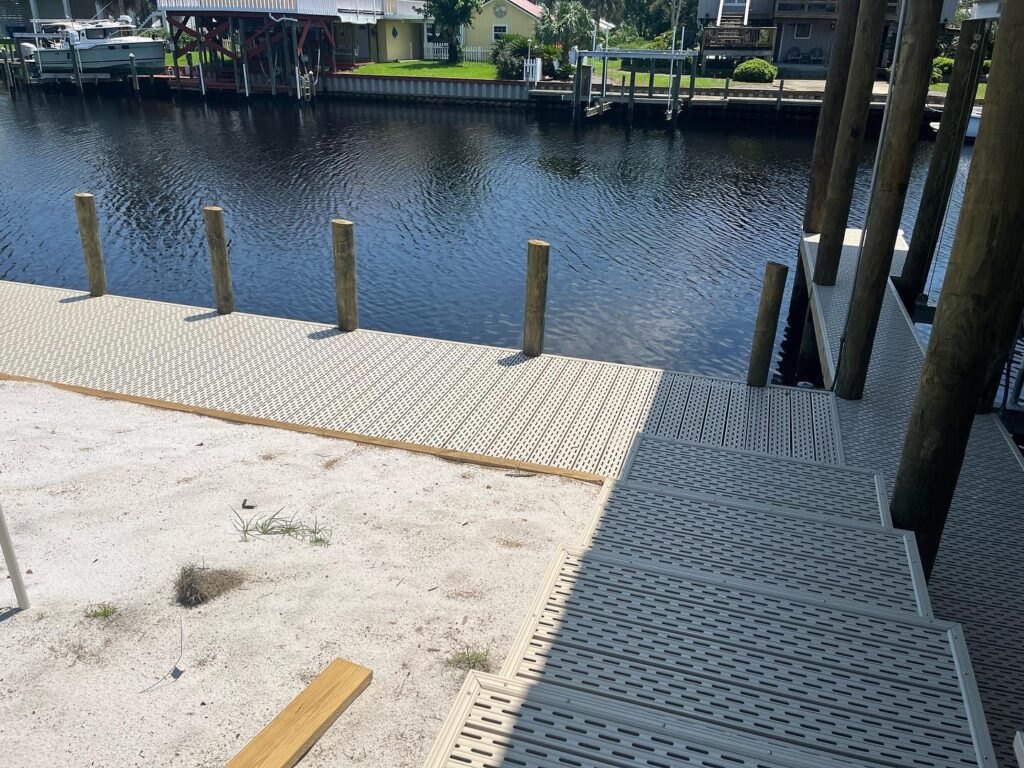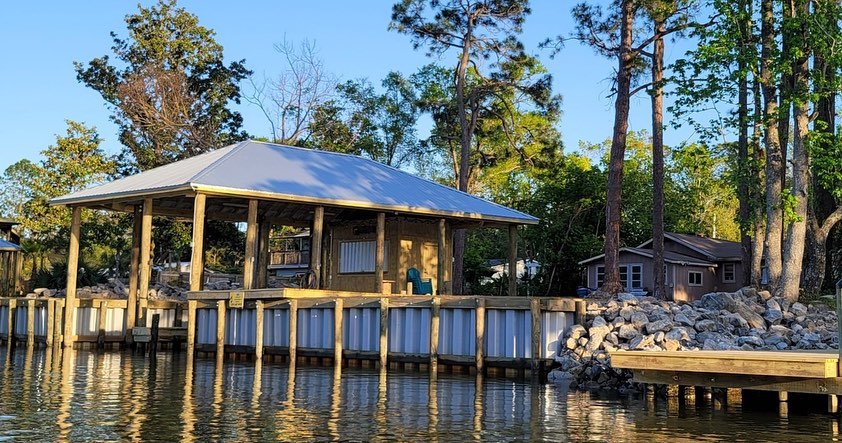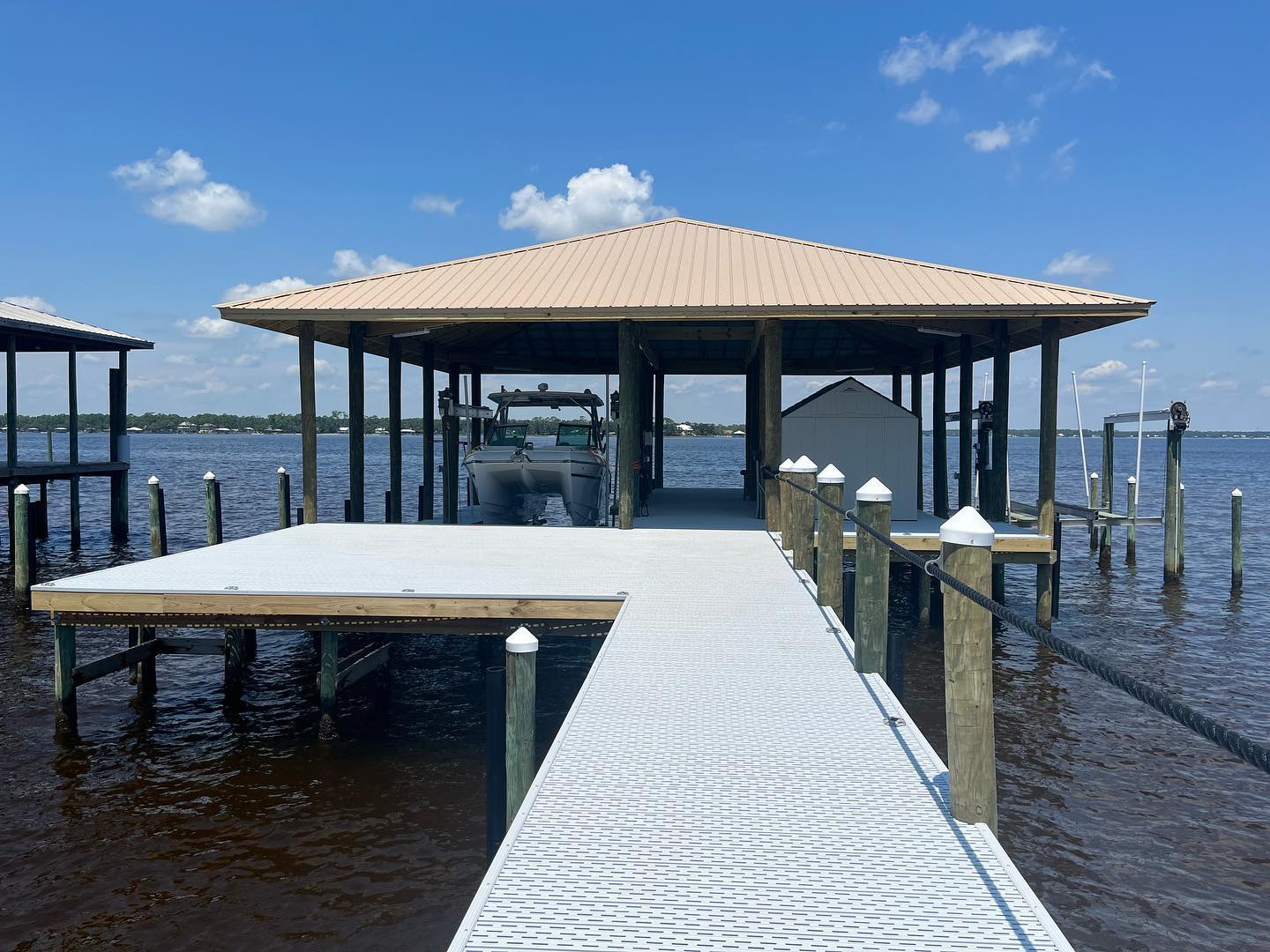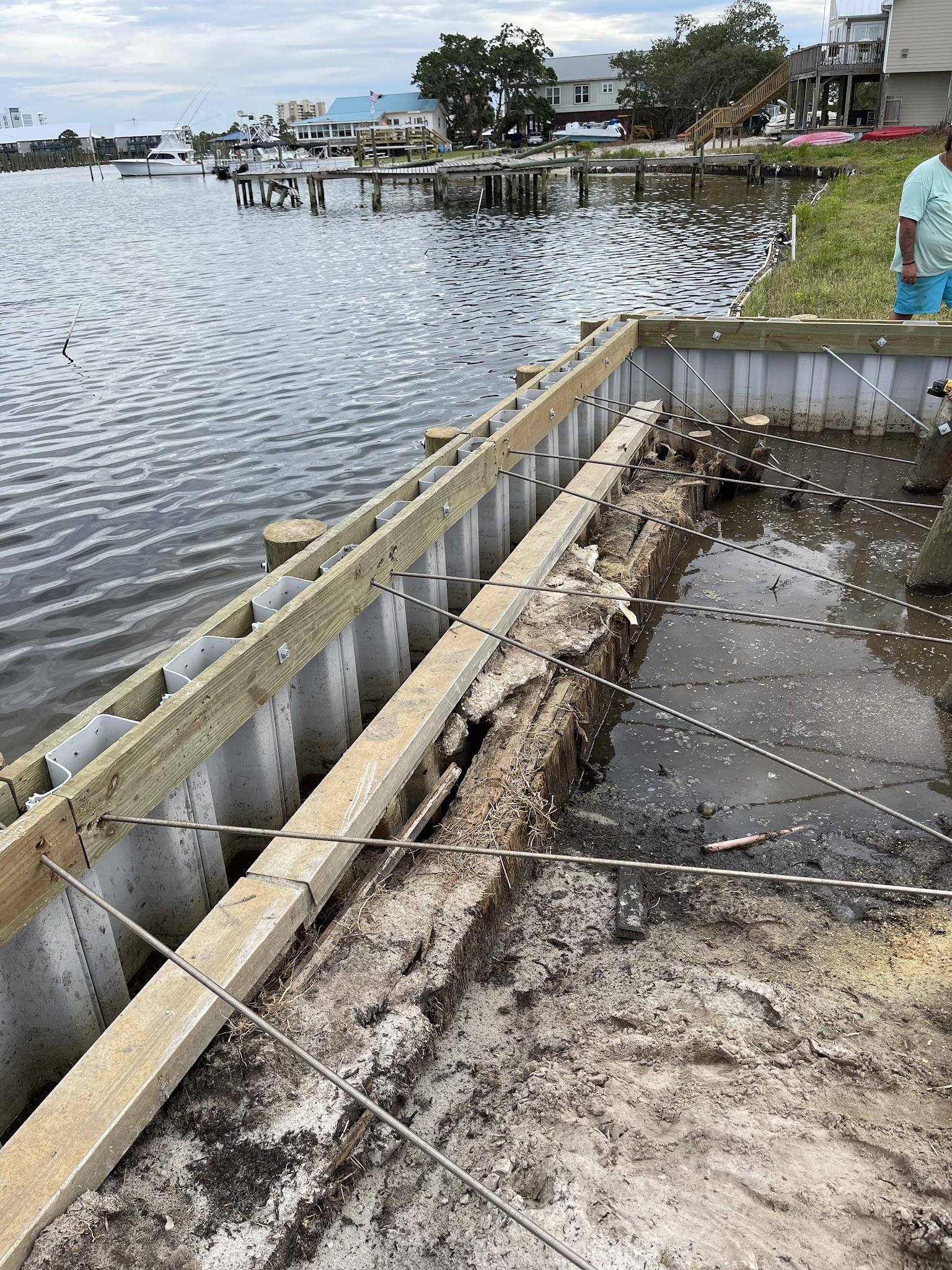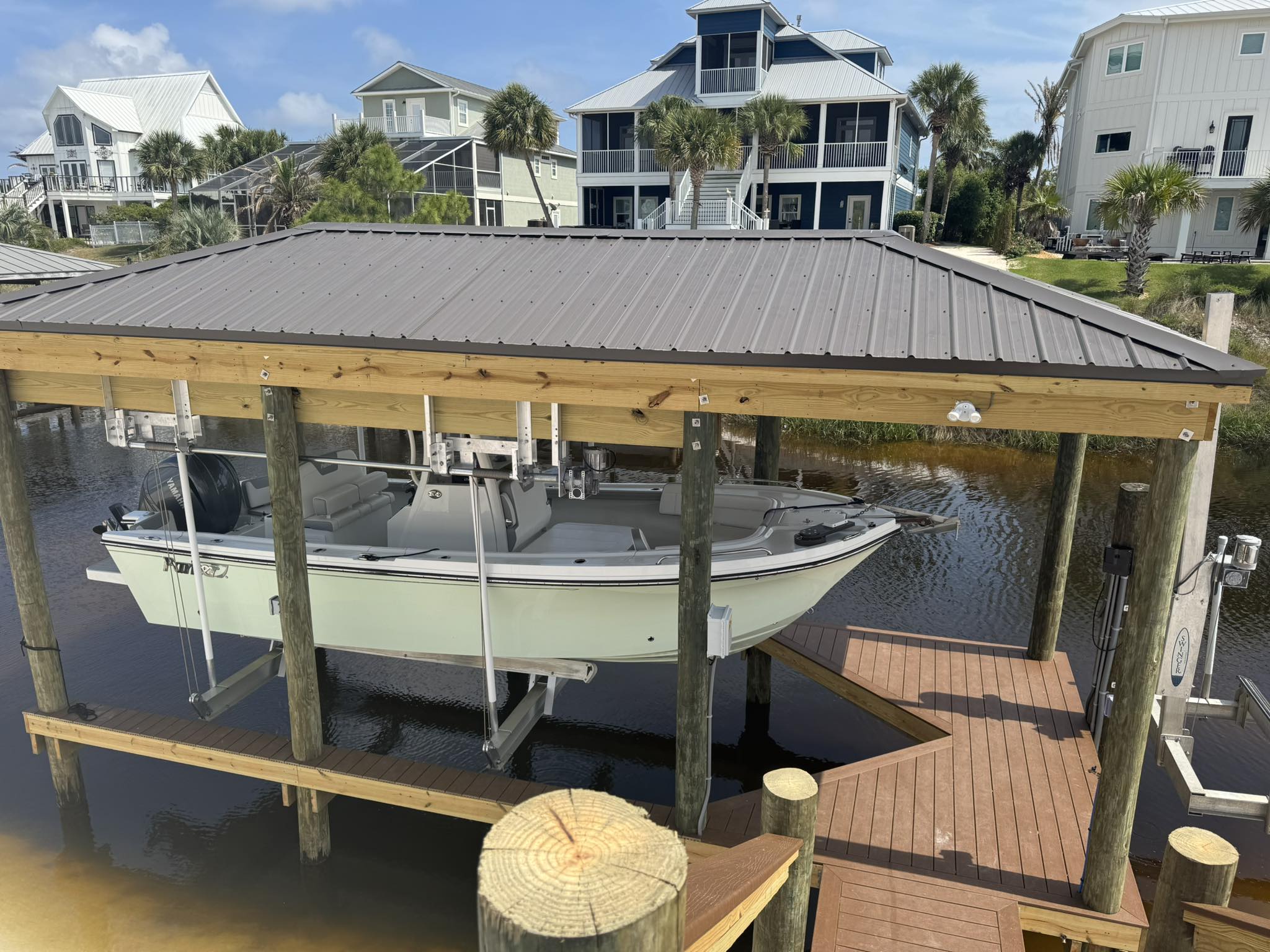Owning a coastal home is a dream come true for many. The sight of the sun rising over the water, the smell of salty air drifting through your windows, and the calming sound of waves are more than just luxuries—they are the lifestyle coastal living provides. But with that dream comes the very real responsibility of protecting your home and land from the natural forces that shape the shoreline over time.
One of the most effective ways to preserve coastal property in certain environments is through the use of a seawall. While not every coastal property requires one, for many waterfront homes—especially those located near canals, bays, or eroding shorelines—a seawall can be a smart, long-term investment in protection, property value, and peace of mind.
What Is a Seawall and What Does It Do?
A seawall is a man-made barrier constructed along the coastline to protect land from the erosive forces of water. These structures are typically made from concrete, steel, vinyl, rock, or composite materials and are built to absorb, deflect, or contain the energy from waves, tides, and storm surges.
The primary function of a seawall is to reduce erosion and prevent the land behind it from being washed away. In many coastal environments, especially those with frequent tidal movement or exposure to severe storms, unprotected land can erode quickly—sometimes leading to serious damage to foundations, landscaping, docks, or outdoor amenities.
Seawalls essentially act as a shield, maintaining the integrity of the shoreline and preserving the usable space between the water’s edge and your home. Without one, homeowners may watch their yard or waterfront features gradually disappear, particularly during storm seasons or over several years of minor but consistent erosion.
Why Erosion Matters So Much
Erosion may sound like a slow, distant issue—but for many waterfront homeowners, it’s a reality that can appear almost overnight. Erosion is the natural process of soil, sand, or other earth material being worn away by the movement of water or wind. Over time, erosion can undermine property lines, damage foundations, and eliminate critical landscaping.
Storm events accelerate this process significantly. High winds, heavy rainfall, and storm surges combine to wash away soil at an alarming rate. Once erosion sets in, it can be extremely difficult—and expensive—to reverse. Installing a seawall at the right time can prevent this damage before it begins and save homeowners from costly remediation in the future.
Even areas with seemingly calm water—such as bays, canals, and manmade lakes—can experience erosion due to boat wake or rising water levels. Seawalls provide structure and stability to these environments, helping maintain a clean, consistent shoreline.
Storm Surge and Flood Risk
One of the most dangerous threats to coastal properties is storm surge. This sudden rise in sea level during hurricanes and tropical storms can push water far inland, damaging homes, flooding roads, and destroying infrastructure.
Seawalls offer a layer of defense against storm surge. While they don’t stop flooding altogether, they can help reduce the intensity of water impact and delay the infiltration of water into properties. In areas prone to storm surge, seawalls can be part of a larger flood prevention strategy that includes elevated construction, proper drainage systems, and flood barriers.
When designed and maintained properly, a seawall can offer years—even decades—of protection from the unexpected.
The Financial and Practical Benefits
A seawall is more than a protective structure—it’s an investment in the long-term value of your home. Coastal properties are often premium real estate, and preserving your shoreline can help retain, or even increase, your property’s market value.
Buyers who are familiar with the risks of waterfront living often view a seawall as a reassuring feature. It shows that the home has been cared for and that long-term planning is in place. In some cases, having a seawall already installed can be the deciding factor in a sale, particularly for buyers who are concerned about flooding or erosion.
Additionally, some insurance providers may offer more favorable terms to homeowners with proper erosion control systems in place, including seawalls. While this varies by provider and region, it’s worth investigating when considering your options.
When a Seawall May Be Necessary
Not every coastal property requires a seawall, and in some locations, alternative shoreline protections may be more appropriate or even preferred by local environmental regulations. However, seawalls are often recommended in situations such as:
-
Canal-front homes: Where land directly meets calm water, especially if boat traffic causes wake.
-
Properties on eroding banks: Where the shoreline is actively receding or softening.
-
Developed shorelines: Where landscaping, structures, or docks are close to the water’s edge.
-
High-value real estate: Where a homeowner wants long-term peace of mind about protecting their investment.
-
Storm-prone areas: Where hurricanes or seasonal storms are common and damage from high water levels is a concern.
In each of these situations, a seawall can help protect property, improve safety, and reduce the need for future repairs.
Seawalls vs. Other Shoreline Protections
Seawalls are just one solution for managing shoreline erosion. In some areas, more natural approaches—like living shorelines or riprap—may be more suitable or environmentally friendly.
-
Riprap involves placing large rocks along the shoreline to break up wave energy and reduce erosion.
-
Living shorelines use native plants and natural materials to absorb water and stabilize the soil, promoting habitat for fish and wildlife.
-
Bulkheads, a type of seawall, are vertical barriers that may use wood or composite materials.
-
Revetments are sloped structures often made of stone or concrete placed on the bank.
Each method has its pros and cons, depending on local regulations, environmental impact, and the specific conditions of your property. An experienced marine contractor or coastal engineer can evaluate your shoreline and help determine the best approach.
Environmental Considerations and Permits
Before constructing a seawall, it’s important to understand local permitting requirements and environmental guidelines. Many coastal areas require approval from city, state, or federal agencies before work can begin. This ensures the protection of natural habitats and the long-term health of the shoreline.
In some cases, seawalls can negatively affect neighboring properties by redirecting wave energy. That’s why proper engineering and placement are critical to ensure your seawall serves its intended purpose without causing unintended consequences.
In addition, some communities are embracing hybrid systems—using seawalls for protection while integrating vegetation or natural buffer zones in front of them to enhance water absorption and minimize disruption to marine life.
Seawall Maintenance and Longevity
A well-built seawall can last anywhere from 20 to 50 years, depending on the material used and the conditions it faces. However, regular maintenance is essential to keep it performing as intended.
Signs that your seawall may need repair or attention include:
-
Visible cracks or bulging
-
Soil or sand loss behind the wall
-
Rust or deterioration of anchors and tiebacks
-
Water seepage through or around the structure
Routine inspections by professionals can help catch small issues before they become big problems. Investing in maintenance now can extend the life of your seawall and save money in the long run.
Planning Ahead: Is a Seawall Right for Your Property?
If you’re unsure whether your coastal home would benefit from a seawall, start by asking a few key questions:
-
Has your shoreline changed noticeably in recent years?
-
Do you notice flooding, pooling, or land loss during storms?
-
Are your outdoor structures, patios, or docks close to the water?
-
Do local authorities or neighbors already have seawalls in place?
Answering “yes” to any of these may be a sign that your property is at risk. A site assessment from a marine construction expert can give you clear, practical recommendations based on your location, elevation, and environmental conditions.
A Custom Approach for Every Shoreline
Seawalls are not a one-size-fits-all solution—and that’s a good thing. Every shoreline is different, and the best protective measures are those that are thoughtfully designed and carefully implemented for your specific environment. Whether you need a traditional concrete seawall, a more flexible vinyl bulkhead, or a hybrid solution combining structure and nature, there are many options available today.
What matters most is taking a proactive approach. Waiting until damage has already occurred can lead to more expensive repairs and a loss of valuable property. With the right protection in place, you can enjoy your home—and the incredible views that come with it—with confidence and clarity.
Final Thoughts
Waterfront living is about enjoying life by the water—but that experience comes with unique challenges. For many coastal homeowners, a seawall is one of the smartest ways to protect what matters most. It provides stability, security, and long-term peace of mind while helping you make the most of your investment.
Whether you’re building a new home or protecting one you’ve loved for years, the decision to install a seawall should be informed, thoughtful, and guided by expert insight. With the right plan in place, your shoreline can be as strong as it is beautiful.

